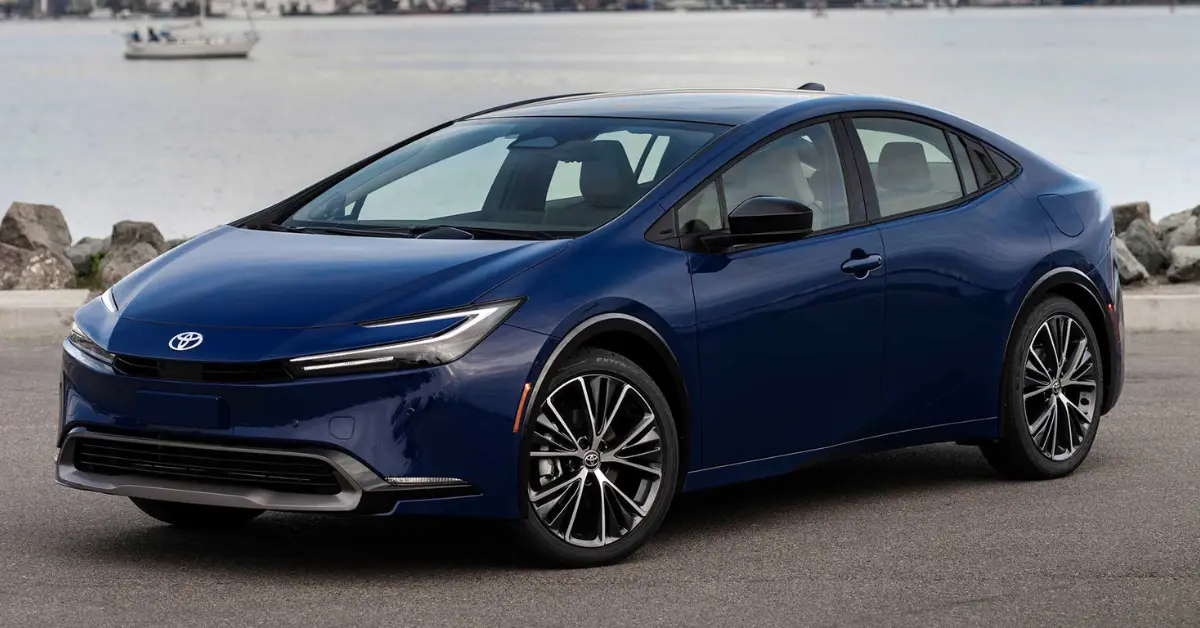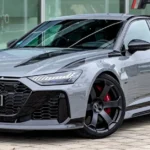When you hear the word “Prius,” most people think of the car that truly put hybrid vehicles on the map. While it wasn’t the very first hybrid or even the first Prius, the 2006 Toyota Prius was the one that made hybrids mainstream. It made hybrid technology accessible, practical, and popular, changing the way we think about fuel economy and eco-friendly cars.
This second-generation Prius, produced from 2004 to 2008, sold over 1.2 million units worldwide. It featured an impressive fuel economy of nearly 50 miles per gallon combined, a quirky but aerodynamic design, and a futuristic interior that included one of the very first standard touchscreens in a non-luxury car. Plus, it’s still a reliable, practical option for buyers today, with some models boasting under 40,000 miles and still going strong.
| Feature | Details |
|---|---|
| Production Years | 2004 – 2008 |
| Global Sales | 1.2 million units |
| Engine | 1.5L Hybrid 4-cylinder (110 hp combined) |
| Fuel Economy (EPA 2007 Rating) | 48 MPG City / 45 MPG Highway |
| 0-60 mph Time | 11 seconds |
| Design | Midsize hatchback, aerodynamic with split rear window |
| Interior Features | Digital gauge cluster, touchscreen, steering wheel climate controls |
| Unique Interior Storage | Two glove boxes, hidden compartments, dual power ports |
The Hybrid Revolution, What Made the 2006 Prius So Special?
The original Prius debuted in 1997, but it was a small, expensive car mostly sold in Japan. It never really caught on with everyday drivers in the U.S. or elsewhere, as it was too pricey and too limited in space. The 2006 Prius changed all that by offering a more practical, affordable, and family-friendly hybrid vehicle. It wasn’t just a car for environmentalists anymore—it was a car for everyone.
This second-generation Prius grew 7 inches compared to the original, shifting from a tiny sedan to a midsize hatchback. This gave it more interior space and cargo room, making it suitable for families and daily use. When combined with a price tag that was reasonable for the time, the Prius became the first hybrid to truly smash into the mainstream market.
One of the biggest selling points was the hybrid powertrain itself. The 1.5-liter 4-cylinder engine paired with an electric motor produced a combined 110 horsepower. Sure, it wasn’t fast—0 to 60 mph took about 11 seconds—but that wasn’t the point. What really mattered was the fuel economy, which the EPA rated at 48 mpg city and 45 mpg highway after 2007’s updated testing methods. Back then, these numbers were groundbreaking, especially compared to typical midsize SUVs getting around 20 mpg and even compact cars rarely hitting 35 mpg combined.
Quirks and Features, The Prius’s Unique Exterior and Interior Design
Exterior: Aerodynamic But Unusual
The Prius was purpose-built as a hybrid, not just a hybrid powertrain stuffed into an existing model. That meant its design was unconventional. The front end sloped sharply upward from the headlights to a high roofline, then sloped down again toward the back, creating a distinctive aerodynamic shape. This shape helped maximize fuel efficiency, but it also brought some unique quirks—like the split rear window, which divided the back glass into two sections separated by a horizontal bar. This design reduced rear visibility and was often criticized, but it was a trade-off Toyota accepted for better aerodynamics.
Another eye-catching feature was the clear rear light housings, a styling choice borrowed from sportier enthusiast cars of the era. It gave the Prius a futuristic look, matching its forward-thinking hybrid technology.
Interior: Futuristic But Funky
Step inside the 2006 Prius, and you’ll find a cabin unlike any other car from its time. The long, sloping windshield extended into the dashboard, and Toyota placed the digital gauge cluster not behind the steering wheel, but at the base of the windshield. This was unusual, but it made the car feel like something out of a sci-fi movie. The gauges were fully digital, a rarity back then.
Even more groundbreaking was the standard touchscreen interface. In 2004, touchscreens were mostly luxury car features, but Toyota made it standard in the Prius. The screen controlled climate and audio settings, although the interface was a bit slow and sometimes frustrating—changing temperature required pressing tiny up/down arrows repeatedly instead of a smooth dial or slider.
Despite these quirks, the touchscreen also displayed a real-time energy consumption monitor. This allowed drivers to watch how power flowed between the engine, motor, and battery—a neat feature for the tech-savvy or eco-conscious driver wanting to maximize efficiency.
Additional interior oddities included:
- Two glove boxes—one upper and one lower—for extra storage
- A gear selector that required pushing left and up/down, then returning to neutral position
- Steering wheel climate controls, allowing easy temperature adjustments without using the touchscreen
- A confusing “map” button on the steering wheel that did nothing unless the optional navigation system was installed
- Hidden storage compartments and cleverly placed power ports, including one in the center console and one below the dashboard
- A unique start system requiring the key to be inserted before pushing the power button
Practicality at Its Best: Space, Comfort, and Cargo
One of the biggest surprises of the 2006 Prius is just how spacious it is. Even though the car is compact—only about 175 inches long—the interior feels roomy. Thanks to the small hybrid engine and battery pack placement under the car, Toyota was able to stretch out the cabin, giving even tall passengers plenty of legroom and headroom in both front and rear seats.
For example, a 6’4” driver can sit comfortably up front and still have ample space behind, making the Prius a genuine family-friendly car. The rear seats offer a fold-down center armrest and cup holders that drop down from the rear of the center console, though the placement is a bit unusual.
The hatchback design adds to practicality, providing more cargo space than a typical sedan trunk. Folding down the rear seats opens up a large flat area perfect for hauling bulky items or even urban car camping—a surprisingly popular use of the Prius today. Beneath the cargo floor lies additional hidden storage for smaller, valuable items or tools, adding to the car’s clever packaging.
Driving the 2006 Prius: Not for Speed, But Reliable and Comfortable
Driving the Prius is an experience that perfectly matches its identity. Don’t expect a sports car—it’s slow, with a 0-60 mph time of about 11 seconds. The hybrid’s electric motor helps with low-end torque but not enough to make it quick. Steering and handling are competent but uninspiring, designed for comfort and efficiency rather than excitement.
Car enthusiasts might scoff at the Prius for being dull or “boring,” but that misses the point. This car was built to be practical, reliable, and economical. It succeeded spectacularly, becoming a favorite for everyone from eco-conscious buyers to taxi drivers and families.
The Prius is quiet, comfortable, and offers a smooth ride. It also boasts Toyota’s legendary reliability: many of these cars are still on the road today, with low mileage examples coming up for sale regularly. The fact that you can still see multiple Prius models on the road two decades later speaks volumes about its durability and appeal.
Final Thoughts: Why the 2006 Prius Still Matters Today
The 2006 Toyota Prius wasn’t fast or flashy, and it certainly wasn’t designed to thrill car enthusiasts. But it was a game-changer in automotive history. It made hybrid technology accessible to millions, introduced futuristic design elements, and showed that a practical, efficient, and reliable hybrid could be a mainstream success.
If you’re looking for a practical daily driver with proven fuel efficiency, clever storage, and a unique style, the second-generation Prius deserves serious consideration. And for those who appreciate automotive history, it’s a fascinating glimpse into the hybrid revolution that paved the way for today’s electric and hybrid vehicles.
I am a seasoned blog writer with over three years of experience specializing in numismatics and financial news. With a sharp eye for rare and valuable coins—like old dimes, quarters, and pennies—and a deep understanding of government financial aid updates, I delivers well-researched, reliable content that helps readers stay informed and make smart money decisions. Whether you’re a coin collector or someone looking to stay ahead on finance-related news, my articles provide clear, insightful guidance tailored to your interests.



